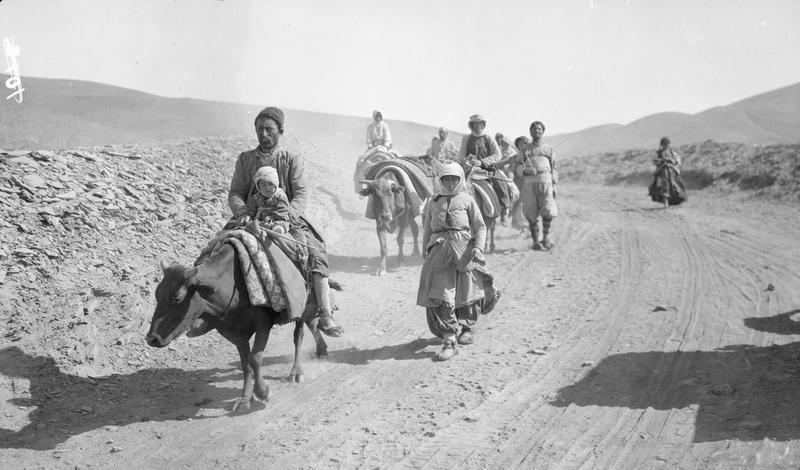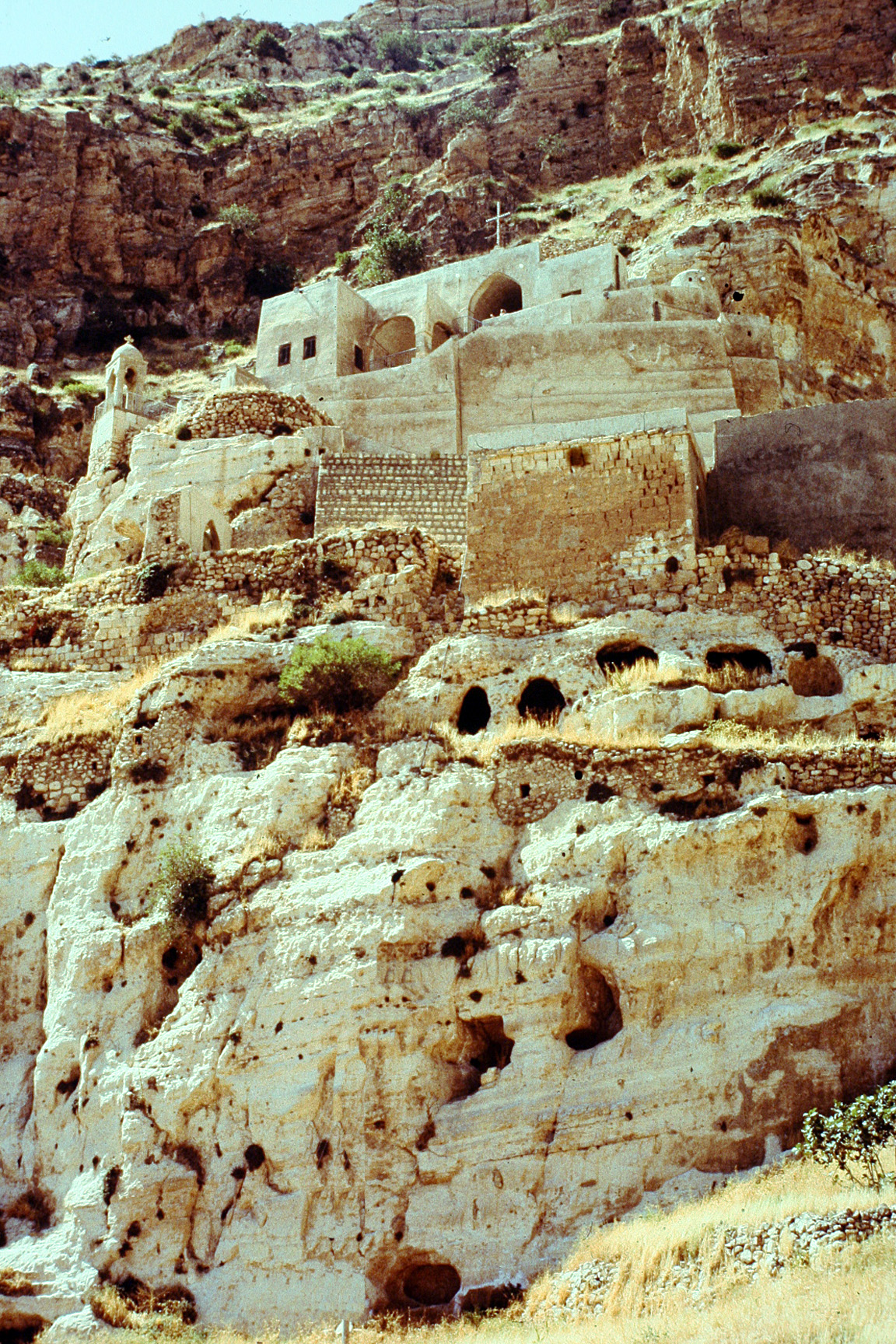|
Dedeler, Yüksekova
Dedeler (; ) is a neighborhood in Yüksekova in Yüksekova District of Hakkâri Province in Turkey. It is populated by Kurds of the Dirî tribe and had a population of 851 in 2023. Dedeler was a village until 2023. History Zīzan (today called Dedeler) was inhabited by 21 Assyrian families in 1850, all of whom were adherents of the Church of the East and were served by one priest and one church as part of the diocese of Gāwār according to the English missionary George Percy Badger. The population had increased to 30 families by 1877 when visited by Edward Lewes Cutts. The village was destroyed by the Ottoman Army in 1915 amidst the Sayfo The Sayfo (, ), also known as the Seyfo or the Assyrian genocide, was the mass murder and deportation of Assyrian people, Assyrian/Syriac Christians in southeastern Anatolia and Persia's Azerbaijan (Iran), Azerbaijan province by Ottoman Army .... Population Population history from 1997 to 2023: References Notes Citations Bibl ... [...More Info...] [...Related Items...] OR: [Wikipedia] [Google] [Baidu] |
Yüksekova
Yüksekova (; ) is a municipality (belde) in the Yüksekova District of Hakkâri Province in Turkey and is the largest city in the province. The city is populated by Kurds of different tribal backgrounds including non-tribal and is considered part of Turkish Kurdistan. The city also has a large ethnic Turkish population for the region and historically had a large Assyrian Christian population although, the Assyrian share of the population used to be much larger than it is today due to the Ottoman Empire's genocide of Assyrian Christians. Yüksekova had a population of 84,800 in 2023. Remziye Yaşar ( Peoples' Democratic Party) was elected mayor in 2019. She was arrested in October 2019 over terrorism-related charges and replaced by a trustee appointed by the central government. Name Yüksekova was historically known as Dize meaning fortress in Kurdish. This region is attested as early as the 4th century in the Syriac text Acts of Mar Mari as Gāwār, a region that Christ ... [...More Info...] [...Related Items...] OR: [Wikipedia] [Google] [Baidu] |
George Percy Badger
George Percy Badger (6 April 1815 – 21 February 1888) was an English Anglican missionary, and a scholar of oriental studies. He is mainly known for his doctrinal and historical studies about the Church of the East. Life ''George Percy Badger'' was born at Chelmsford on 6 April 1815. His father served in the British Army and in 1821 his regiment was transferred in Malta. After his father's death in 1823, George's mother decided to raise her sons in Malta, thus George Badger passed there his youth where he learned the Maltese language and Arabic, which he studied also in Beirut from 1835. On 8 January 1840 Badger married Maria Wilcox in Valletta. He returned to England in 1841, and after some theological studies at the Church Missionary College, Islington, he was ordained Anglican priest in 1842. For his knowledge of the Near East he was appointed by the Archbishop of Canterbury as delegate to the Christians of Church of the East in Mesopotamia and Kurdistan, and in this work ... [...More Info...] [...Related Items...] OR: [Wikipedia] [Google] [Baidu] |
Kurdish Settlements In Hakkâri Province
Kurdish may refer to: *Kurds or Kurdish people *Kurdish language **Northern Kurdish (Kurmanji) **Central Kurdish (Sorani) **Southern Kurdish ** Laki Kurdish *Kurdish alphabets *Kurdistan, the land of the Kurdish people which includes: **Southern Kurdistan **Eastern Kurdistan **Northern Kurdistan **Western Kurdistan See also * Kurd (other) *Kurdish literature *Kurdish music *Kurdish rugs *Kurdish cuisine *Kurdish culture *Kurdish nationalism Kurdish nationalism () is a nationalist political movement which asserts that Kurds are a nation and espouses the creation of an independent Kurdistan from Iran, Iraq, Syria, and Turkey. Early Kurdish nationalism had its roots in the Ottoman ... {{disambiguation Language and nationality disambiguation pages ... [...More Info...] [...Related Items...] OR: [Wikipedia] [Google] [Baidu] |
Neighbourhoods Of Yüksekova
A neighbourhood (Commonwealth English) or neighborhood (American English) is a geographically localized community within a larger town, city, suburb or rural area, sometimes consisting of a single street and the buildings lining it. Neighbourhoods are often social communities with considerable face-to-face interaction among members. Researchers have not agreed on an exact definition, but the following may serve as a starting point: "Neighbourhood is generally defined spatially as a specific geographic area and functionally as a set of social networks. Neighbourhoods, then, are the spatial units in which face-to-face social interactions occur—the personal settings and situations where residents seek to realise common values, socialise youth, and maintain effective social control." Preindustrial cities In the words of the urban scholar Lewis Mumford, "Neighborhoods, in some annoying, inchoate fashion exist wherever human beings congregate, in permanent family dwellings; and ma ... [...More Info...] [...Related Items...] OR: [Wikipedia] [Google] [Baidu] |
Turkish Statistical Institute
Turkish Statistical Institute (commonly known as TurkStat; or TÜİK) is the Turkish government agency commissioned with producing official statistics on Turkey, its population, resources, economy, society, and culture. It was founded in 1926 and headquartered in Ankara. Formerly named as the State Institute of Statistics (Devlet İstatistik Enstitüsü (DİE)), the institute was renamed as the Turkish Statistical Institute on November 18, 2005. See also * List of Turkish provinces by life expectancy References External linksOfficial website of the institute National statistical services Statistical Statistics (from German language, German: ', "description of a State (polity), state, a country") is the discipline that concerns the collection, organization, analysis, interpretation, and presentation of data. In applying statistics to a s ... Organizations established in 1926 Organizations based in Ankara {{Sci-org-stub ... [...More Info...] [...Related Items...] OR: [Wikipedia] [Google] [Baidu] |
Sayfo
The Sayfo (, ), also known as the Seyfo or the Assyrian genocide, was the mass murder and deportation of Assyrian people, Assyrian/Syriac Christians in southeastern Anatolia and Persia's Azerbaijan (Iran), Azerbaijan province by Ottoman Army (1861–1922), Ottoman forces and some Kurdish tribes during World War I. The Assyrians were divided into mutually antagonistic churches, including the Syriac Orthodox Church, the Assyrian Church of the East, and the Chaldean Catholic Church. Before World War I, they largely lived in mountainous and remote areas of the Ottoman Empire and Persia, some of which were effectively Stateless society, stateless. The Ottoman Empire's nineteenth-century centralization efforts led to increased violence and danger for the Assyrians. Mass killing of Assyrian civilians began during the Persian campaign (World War I), Ottoman occupation of Azerbaijan from January to May 1915, during which massacres were committed by Ottoman forces and pro-Ottoman Kur ... [...More Info...] [...Related Items...] OR: [Wikipedia] [Google] [Baidu] |
Military Of The Ottoman Empire
The Military of the Ottoman Empire () was the armed forces of the Ottoman Empire. It was founded in 1299 and dissolved in 1922. Army The Military of the Ottoman Empire can be divided in five main periods. The foundation era covers the years between 1300 (Byzantine expedition) and 1453 ( Conquest of Constantinople), the classical period covers the years between 1451 (second enthronement of Sultan Mehmed II) and 1606 ( Peace of Zsitvatorok), the reformation period covers the years between 1606 and 1826 ( Vaka-i Hayriye), the modernisation period covers the years between 1826 and 1858 and decline period covers the years between 1861 (enthronement of Sultan Abdülaziz) and 1918 ( Armistice of Mudros). The Ottoman army is the forerunner of the Turkish Armed Forces. Foundation period (1300–1453) The earliest form of the Ottoman military was a steppe-nomadic cavalry force.Mesut Uyar, Edward J. Erickson, ''A Military History of the Ottomans: From Osman to Atatürk'', Pleager Se ... [...More Info...] [...Related Items...] OR: [Wikipedia] [Google] [Baidu] |
Edward Lewes Cutts
Edward Lewes Cutts was an English writer, antiquarian and curate, specialising in archaeology and the study of ecclesiastical history. Life and church career Cutts was born on 2 March 1824 in Sheffield. He was the son of John Priston Cutts, an optician, and Mary, daughter of Robert Waterhouse. He was educated at Sheffield Collegiate School and graduated B.A. at Queens' College, Cambridge, in 1848. Being ordained in the same year, he was curate successively of Ide Hill, Kent, until 1850, of Coggeshall, Essex, until 1857, and of Kelvedon until 1859, and was perpetual curate of Billericay until 1865. He had already acted also as local organising secretary of the Additional Curates Society, and on leaving Billericay became general secretary of the society in London, resigning in 1871, on presentation to the vicarage of Holy Trinity, Haverstock Hill. In 1876 Cutts was selected by the Archbishops of Canterbury and York to visit the East and inquire into the position of the Syrian an ... [...More Info...] [...Related Items...] OR: [Wikipedia] [Google] [Baidu] |
Yüksekova District
Yüksekova District is a district in the Hakkâri Province of Turkey. Its seat is the city Yüksekova. Its area is 2,547 km2 and had a population of 121,969 people in 2023. It borders Iran to the east, and Kurdistan Region of Iraq to the south. History The district was historically an important trade route location due to its proximity to Iran. From the 1810s to Sayfo in 1915, the entire population of around the Great Zab was East Syriac Assyrian people, Assyrian whose main occupation was agriculture that consisted of wheat, barley, cotton and tea. The local Assyrian population were descendants of people who found refuge among Kurds from the Golden Horde in the early fifteenth century. Traveller Ely Bannister Soane, Soane visited the district in 1910, describing the area as 'one of the most inaccessible of the many sealed corners of this mountain country'. After the genocide, Assyrian people, Assyrian villages were subsequently populated by Kurds. In 1936, the name of t ... [...More Info...] [...Related Items...] OR: [Wikipedia] [Google] [Baidu] |
Dioceses Of The Church Of The East After 1552
Dioceses of the Church of the East after 1552 were dioceses of the Church of the East and its subsequent branches, both traditionalist (that were eventually consolidated as the Assyrian Church of the East) and pro-Catholic (that were eventually consolidated as the Chaldean Catholic Church). Dioceses of the Eliya line, up to 1700 The traditionalist patriarch Shemon VII Ishoyahb, (1539–1558), who resided in the monastery of Rabban Hormizd Monastery, Rabban Hormizd, consecrating two metropolitans, for Nisibis, nominally with jurisdiction also over Amid and Mardin, and Joseph for Gazarta. was probably unable to exercise his authority in Amid and Mardin, both of which had Catholic metropolitans, but Joseph seems to have been accepted in Gazarta. 's nephew Eliya remained metropolitan of Mosul and ''natar kursya'', and the Mosul and districts certainly remained loyal to VII. The hierarchy of Eliya VI (1558-1591) Patriarch Eliya VI (1558-1591) had a hierarchy of at least six ... [...More Info...] [...Related Items...] OR: [Wikipedia] [Google] [Baidu] |
Church Of The East
The Church of the East ( ) or the East Syriac Church, also called the Church of Seleucia-Ctesiphon, the Persian Church, the Assyrian Church, the Babylonian Church, the Chaldean Church or the Nestorian Church, is one of three major branches of Eastern Christianity, Eastern Nicene Christianity that arose from the Christological controversies in the Christianity in the 5th century, 5th century and the Christianity in the 6th century, 6th century, alongside that of Miaphysitism (which came to be known as the Oriental Orthodox Churches) and Chalcedonian Christianity (from which Catholicism, Eastern Orthodoxy and Protestantism would arise). Having its origins in Mesopotamia during the time of the Parthian Empire, the Church of the East developed its own unique form of Christian theology and East Syriac Rite, liturgy. During the early modern period, a series of Schism#Christianity, schisms gave rise to rival patriarchates, sometimes two, sometimes three. In the latter half of the 20 ... [...More Info...] [...Related Items...] OR: [Wikipedia] [Google] [Baidu] |



